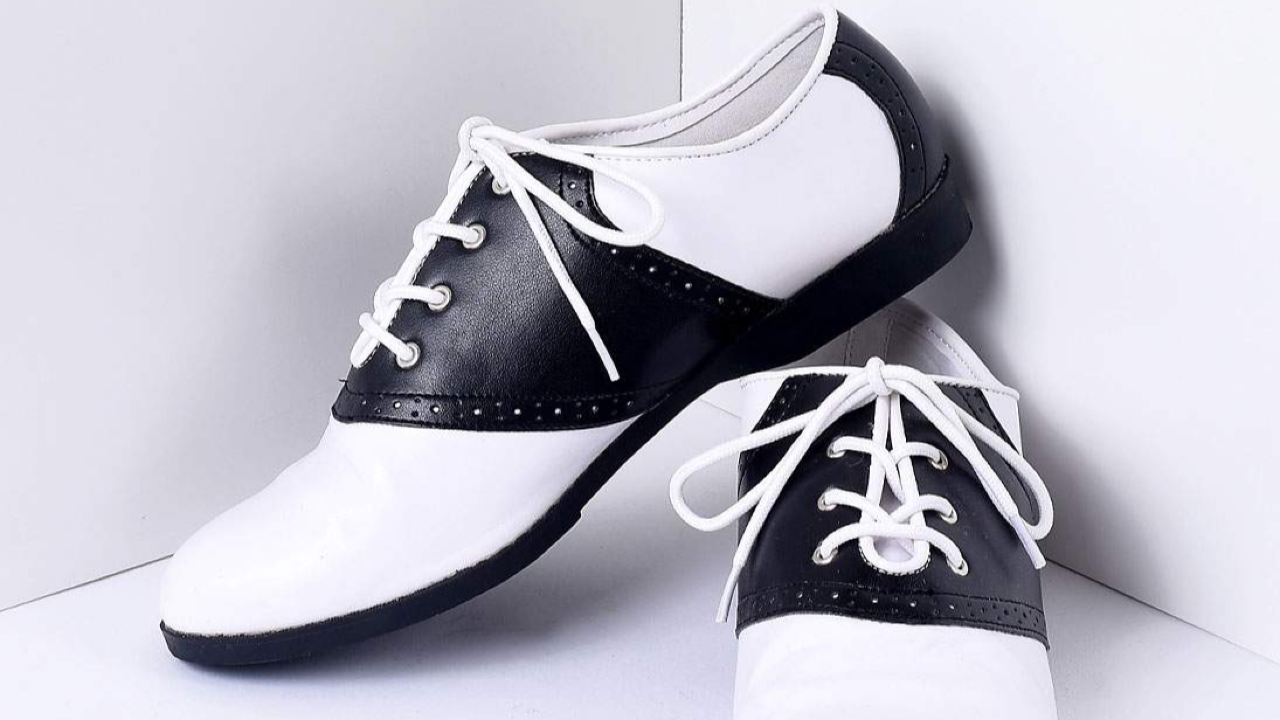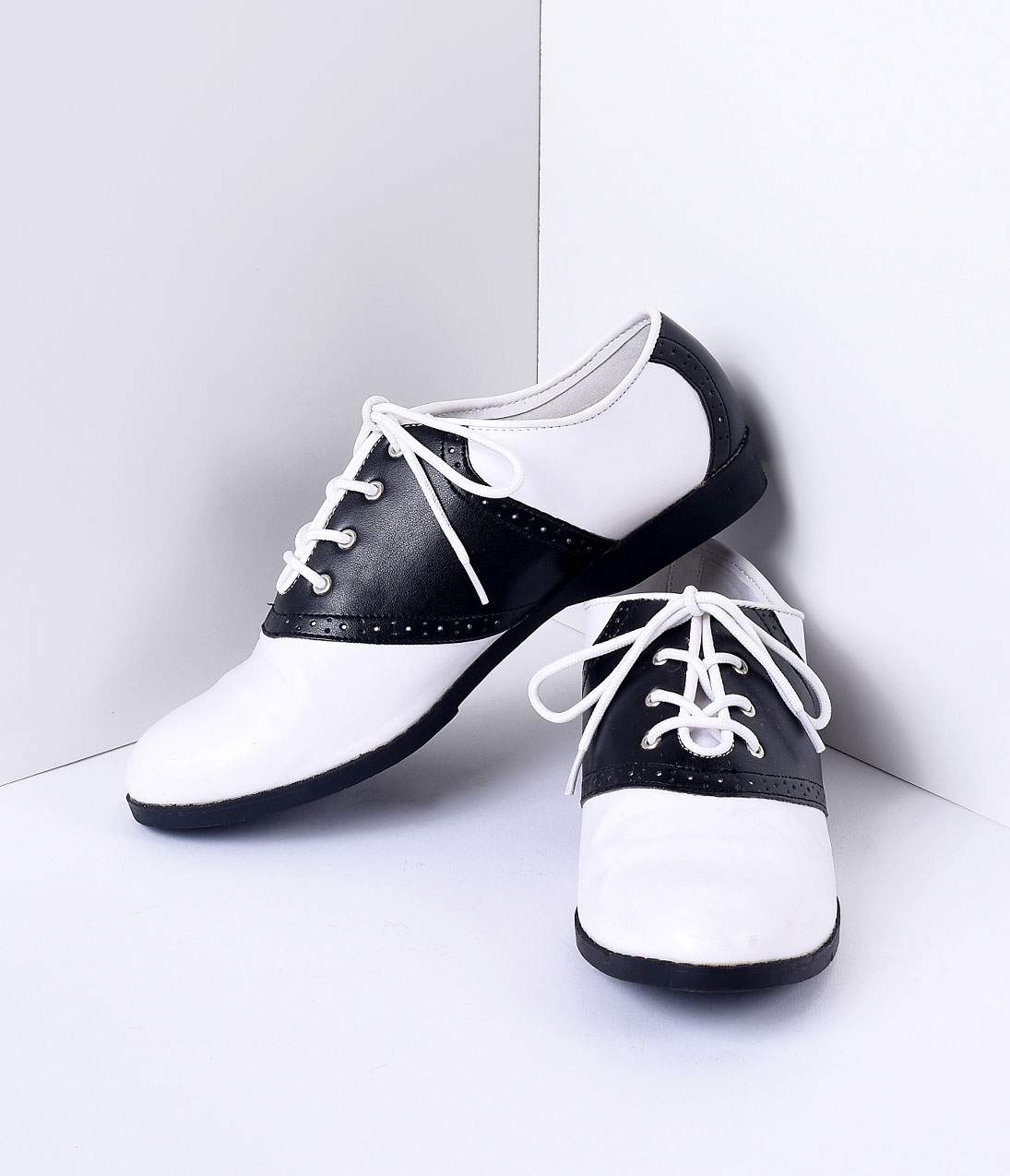AllVintageStyles
The Vintage Fashion Encyclopedia
Saddle Shoes


1950s saddle shoes are two-tone leather oxford shoes featuring a contrasting saddle-shaped panel across the instep that became iconic symbols of American teenage culture and collegiate fashion during the post-war era.
Quick Facts
- Era: 1950s (peak popularity 1950-1959)
- Origin: United States (collegiate and high school fashion)
- Garment Type: Two-tone leather oxford shoes
- Key Identifiers: Contrasting saddle panel, white leather base, black or brown accents
- Typical Resale Price: $40-$180 (authentic vintage pairs)
- Best For: Rockabilly styling, 1950s costume events, and collegiate vintage fashion
History & Evolution
Saddle shoes gained widespread popularity in the 1950s as essential footwear for American teenagers and college students, becoming symbols of youth culture and suburban prosperity during the post-war boom. The distinctive two-tone design originally developed from golf shoes evolved into mainstream casual footwear worn by "bobby soxers" and students embracing the decade's preppy aesthetic.
The shoes became intrinsically linked to 1950s teenage culture through their association with sock hops, drive-ins, and high school social events where they were worn with bobby socks, poodle skirts, and other elements of the era's youthful fashion. Popular brands like Bass Weejuns and other quality shoe manufacturers created versions with superior leather construction and traditional craftsmanship.
During the height of their popularity, saddle shoes represented the idealized American teenager lifestyle promoted in movies, television shows, and popular culture. The clean, wholesome aesthetic perfectly complemented the decade's emphasis on conformity and traditional values within youth culture. Today, authentic 1950s saddle shoes are prized by collectors for their superior leather quality and representation of iconic American teenage fashion.
Authentication Tips
Authentic 1950s Features:
- High-quality leather construction with substantial weight and durability
- Hand-stitched details and quality construction methods
- Traditional oxford shoe construction with proper lacing systems
- Vintage shoe brand labels from established manufacturers
- Leather soles and heels typical of 1950s footwear production
Common Reproductions/Modern Pieces:
- Lightweight synthetic materials instead of genuine leather construction
- Poor quality stitching and manufacturing shortcuts
- Modern rubber soles or contemporary comfort features
- Incorrect proportions or color combinations that lack authentic 1950s styling
- Mass-produced construction lacking vintage attention to detail
Styling & Use Cases
- Best for rockabilly enthusiasts: Pair with poodle skirts, cardigans, and bobby socks for authentic 1950s teenage styling
- Ideal for collegiate looks: Style with A-line skirts, button-down shirts, and vintage accessories for preppy 1950s aesthetics
- Perfect for themed events: Combine with period-appropriate clothing for sock hops, costume parties, or vintage dance events
Modern styling tips:
- Wear with contemporary high-waisted jeans and fitted tops for updated vintage-inspired casual looks
- Pair with modern midi skirts and cardigans for subtle 1950s collegiate styling
- Style with vintage band tees and contemporary accessories for casual retro-inspired outfits
FAQ
Q: How can I tell if saddle shoes are authentic 1950s vintage?
A: Look for high-quality leather construction, hand-stitched details, traditional oxford shoe construction, vintage brand labels, and leather soles. Authentic pieces show superior craftsmanship typical of 1950s footwear manufacturing.
Q: What's the typical price range for vintage 1950s saddle shoes?
A: Authentic vintage saddle shoes range from $40-$180 depending on brand, condition, and leather quality. Well-preserved pairs from established manufacturers command higher prices among vintage fashion collectors.
Q: How should I care for vintage 1950s saddle shoes?
A: Condition leather regularly with appropriate leather care products, use shoe trees to maintain shape, and store in dust bags. Professional cobbler services may be needed for sole replacement or vintage construction maintenance.
Q: What makes 1950s saddle shoes valuable to collectors?
A: Their representation of iconic American teenage culture, superior leather construction compared to modern alternatives, association with 1950s youth fashion and social movements, and embodiment of the decade's collegiate and wholesome aesthetic ideals.
📷: Unique Vintage
